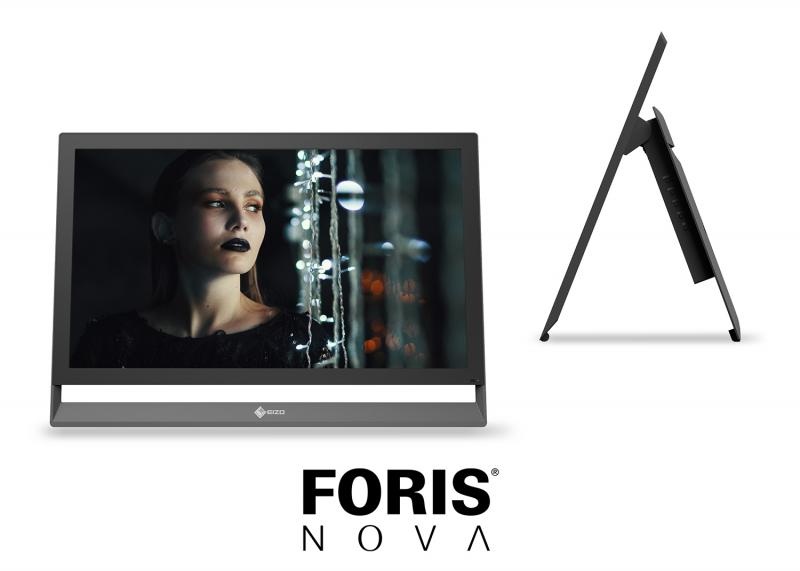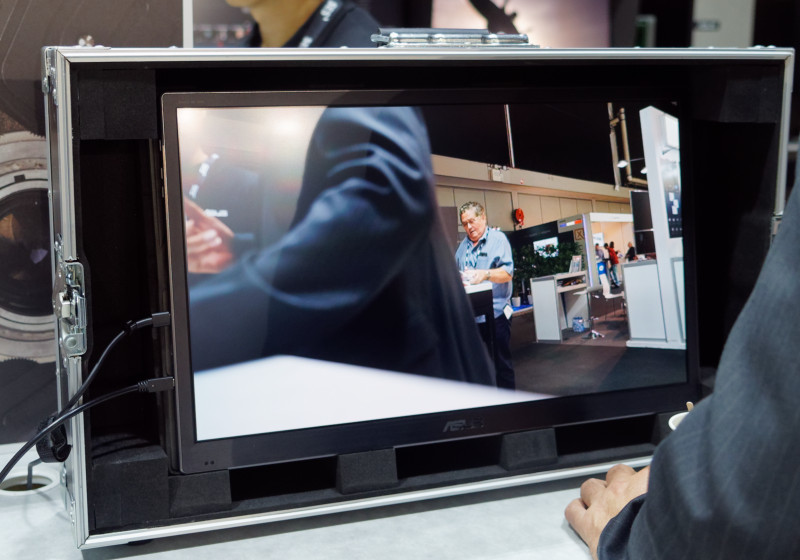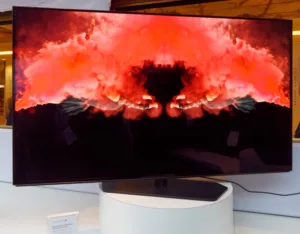I was struggling to choose a topic for my DD this week. There is lots happening in the display field, especially in large displays, with developments in dual layer LCDs, miniLED backlights, QDOLED and other areas. Then I spotted the news that Eizo was adopting the JOLED inkjet-printed OLED to create a new monitor. (EIZO Releases Its First Limited Edition 21.6-inch OLED Monitor for Private Entertainment of 4K and HDR Content)

I always keep a special eye on the company, partly because I worked at the firm for seven years, more than 25 years ago. The company has always had a very high quality ethos and was rarely happy to compromise its quality for any reason. That’s one of the reasons that it has been very successful in applications where price is not the main purchasing criteria – including, among others, medical and air traffic control. It also has a lot of very loyal clients in financial services and in applications where accurate colour performance is critical. I know from experience that Eizo would never adopt a technology just ‘to be first’. If it’s not good enough, it doesn’t proceed.

So, to see the company adopt OLED technology for a monitor application was quite surprising. So far, the experience of using OLEDs in IT applications has not generally been a positive one. In 2017, the major PC vendors including HP, Lenovo and Dell launched OLED-based notebooks, but struggled with supply and dropped them.
Dell announced the UP3017Q, a 30″ UltraHD monitor using an OLED at CES 2017, but by April, the price dropped from $4,999 to $3,499 and then the product disappeared. We heard that customers were not entirely happy with the performance including issues with slight colour shifts off-axis – an issue that had also troubled Sony in its broadcast OLED monitors. The performance would have been great for most customers, but at those prices, the product has to be very good.
JOLED had been talking about its 21.6″ UltraHD panel since the beginning of 2017 when it said that its first customer was Sony with an application as a medical monitor. That’s not entirely surprising as JOLED was formed by combining the OLED developments by Sony and Panasonic. Panasonic had previously shown impressive-looking inkjet printed OLED TV prototypes (back in 2013 at CES, private events and IFA).
At IBC in 2018, Sony surprised us by telling us that it had stopped the development of OLEDs for broadcast monitors. The company’s flagship ($35,000) broadcast monitor, the BVM-X300 had been based on OLED since 2014. However, the monitor struggled with high brightness and Sony switched its development to dual layer LCDs, based on a panel from Panasonic, that could deliver the high colour volume that OLED struggled with. In SDR that was not such an issue, but with content being mastered at higher brightness, it became a challenge.
In contrast, Eizo has been showing dual panel LCDs for a couple of years, so seeing the company move, in one sense, in the opposite direction to Sony was a slight surprise.
At CES in 2018, Asus announced that it would be using the JOLED inkjet printed OLED in a monitor, although the product didn’t actually start shipping until this year. At €5,000, it’s not a volume product, and is USB-powered. It looks like a useful product for field monitoring of HDR video content and at IFA, the company was showing it in special cases for shielding from ambient light and protection.
 The Asus OLED at IBC. Image:Meko
The Asus OLED at IBC. Image:Meko
Now, Eizo has announced a limited edition (500) of monitors based on the panel. That is a big endorsement of the quality, for me.
I get a lot of complaints from LG Displays about the fact that I am still concerned about screen burn in OLEDs. They say ‘we have sold millions of TVs, so we know it’s not an issue’. I say ‘OK, then, if it is not an issue, why do TV makers still exclude screen burn from their warranties?’. Further, if screen burn is not an issue, why did the EBU, in 2018, update its recommendations on limiting content performance to avoid screen burn to take OLED in account? You can download the recommendations, here. https://tech.ebu.ch/publications/r129. The recommendations suggest limiting peak white to 40% for SDR and 47% of reference white for HDR. It also recommends avoiding saturated colour images. Hmmm…. good luck with that on an IT monitor!
Having said all that, at CES in 2019, the PC vendors came back with new panels and I heard that Samsung Display has been pushing the idea of OLEDs for PC applications, again. Dell also showed its 55″ Alienware OLED display for gaming and costing $3,999. https://www.cnet.com/reviews/alienware-aw5520qf-monitor-review/ In recent weeks, the notebooks from CES with OLED displays have appeared and have been getting good reviews. At the moment, I haven’t seen much in the way of controversy about burn-in.
Dell’s Alienware 55 OLED at CES. Image:Meko
Given that the PC vendors didn’t get much pleasure from their previous experience with OLEDs and given their generally conservative approach, they must have taken quite a bit of persuasion by Samsung to get back into the technology. Of course, if Samsung, as is currently rumoured, goes down the path of developing QDOLED technology, that may be very interesting for the future as it should be better than LG’s RGBW OLED and should have fewer issues of differential colour screen burn.

